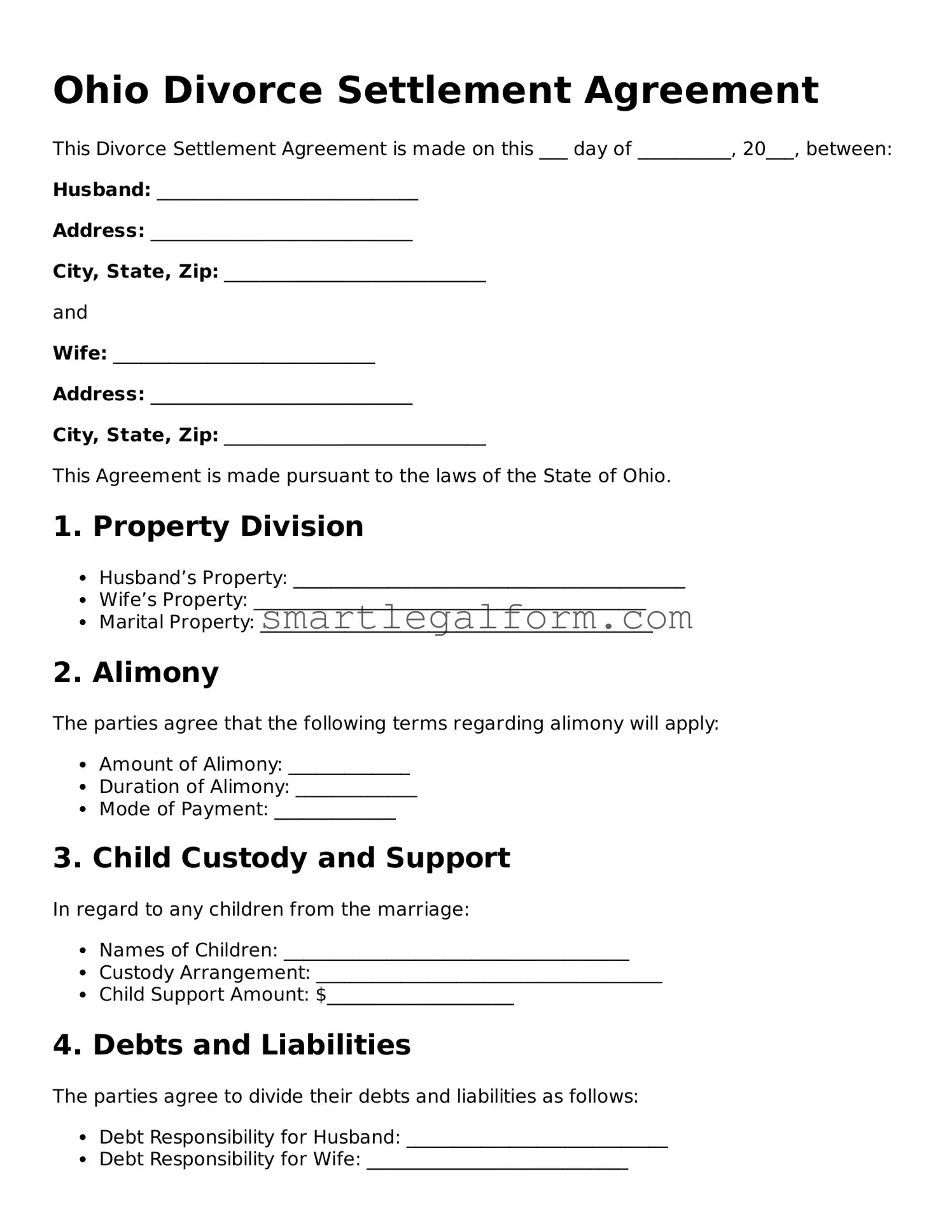Ohio Divorce Settlement Agreement
This Divorce Settlement Agreement is made on this ___ day of __________, 20___, between:
Husband: ____________________________
Address: ____________________________
City, State, Zip: ____________________________
and
Wife: ____________________________
Address: ____________________________
City, State, Zip: ____________________________
This Agreement is made pursuant to the laws of the State of Ohio.
1. Property Division
- Husband’s Property: __________________________________________
- Wife’s Property: __________________________________________
- Marital Property: __________________________________________
2. Alimony
The parties agree that the following terms regarding alimony will apply:
- Amount of Alimony: _____________
- Duration of Alimony: _____________
- Mode of Payment: _____________
3. Child Custody and Support
In regard to any children from the marriage:
- Names of Children: _____________________________________
- Custody Arrangement: _____________________________________
- Child Support Amount: $____________________
4. Debts and Liabilities
The parties agree to divide their debts and liabilities as follows:
- Debt Responsibility for Husband: ____________________________
- Debt Responsibility for Wife: ____________________________
5. Miscellaneous Provisions
- Modification of Agreement: ________________________________
- Dispute Resolution: ________________________________
- Governing Law: State of Ohio
Signatures
We, the undersigned, agree to the terms of this Divorce Settlement Agreement:
Husband's Signature: ________________________ Date: ____________
Wife's Signature: ________________________ Date: ____________
